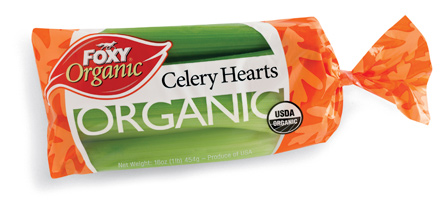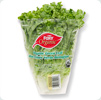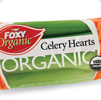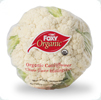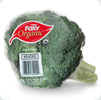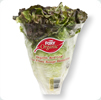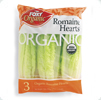|
Green Leaf
The crisp, curly leaves of green leaf lettuces have high concentrations of vitamin A and beta-carotene, which have anti-oxidant properties and contribute to healthy eyes and skin. Leaves also provide a good source of folate, shown to prevent birth defects, vitamins C and K, and essential minerals such as iron, calcium, magnesium and potassium. |
|
Celery Sleeve
Celery sleeve is low in Saturated Fat, and very low in Cholesterol. It is also a good source of Riboflavin, Vitamin B6, Pantothenic Acid, Calcium, Magnesium and Phosphorus, and a very good source of Dietary Fiber, Vitamin A, Vitamin C, Vitamin K, Folate, Potassium and Manganese. |
|
Celery Hearts
Celery provides minerals and vitamins A, C and K and to help lower cholesterol and blood pressure, prevent cancer and promote healthy skin, eyes, bones and brain. Organic celery hearts, low in calories and sodium, are fat-, saturated fat- and cholesterol-free. |
|
Cauliflower
Cauliflower heads resemble those in broccoli, which differs in having flower buds.Cauliflower is low in fat, low in carbs but high in dietary fiber, folate, water, and vitamin C, possessing a high nutritional density.Cauliflower contains several phytochemicals, common in the cabbage family, that may be beneficial to human health. |
|
Asparagus
Asparagus is low in calories and is very low in sodium. It is a good source of vitamin B6, calcium, magnesium and zinc, and a very good source of dietary fiber, protein, vitamin A, vitamin C, vitamin E, vitamin K, thiamin, riboflavin, rutin, niacin, folic acid, iron, phosphorus, potassium, copper, manganese and selenium, as well as chromium, a trace mineral that enhances the ability of insulin to transport glucose from the bloodstream into cells.The shoots are prepared and served in a number of ways around the world, typically as an appetizer or vegetable side dish. |
|
Broccoli
Broccoli is high in vitamin C, as well as dietary fiber; it also contains multiple nutrients with potent anti-cancer properties, such as diindolylmethane and small amounts of selenium. A single serving provides more than 30 mg of Vitamin C and a half-cup provides 52 mg of Vitamin C. The 3,3'-Diindolylmethane found in broccoli is a potent modulator of the innate immune response system with anti-viral, anti-bacterial and anti-cancer activity. Broccoli also contains the compound glucoraphanin, which can be processed into an anti-cancer compound sulforaphane, though the benefits of broccoli are greatly reduced if the vegetable is boiled. Broccoli is also an excellent source of indole-3-carbinol, a chemical which boosts DNA repair in cells and appears to block the growth of cancer cells. |
|
Iceberg
Iceberg Lettuce is most often used for salads, although it is also seen in other kinds of food, such as soups, sandwiches and wraps. Lettuce is a good source of vitamin A and potassium, as well as minor source for several other vitamins and nutrients. |
|
Red Leaf
Red leaf lettuce is a form of loose-leaf lettuce, very comparable to green leaf lettuce. It packs a high nutritional value, into very few calories, about 15 per a 12-ounce (340.2 grams) serving. Additionally, red leaf lettuce is an excellent source of beta carotene, which may be indicated in reducing risk for developing cataracts. They tend to have a mild taste, a nice crunch, and are excellent as used in a variety of dishes.The name can be a little deceiving since red leaf lettuces are not completely red. Instead, the tops of the leaves exhibit some red or purple coloring that may extend a few inches into the leaf. |
|
Romaine Hearts
Romaine Hearts are the center leaves of Romaine lettuce. An excellent source of vitamin A and beta-carotene (healthy eyes, skin and antioxidants); vitamin K (healthy bones and brain); and folate (helps to prevent birth defects), organic romaine hearts are low in fat and calories, saturated fat-, sodium- and cholesterol-free and a good source of dietary fiber. |
|

